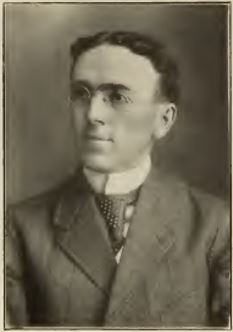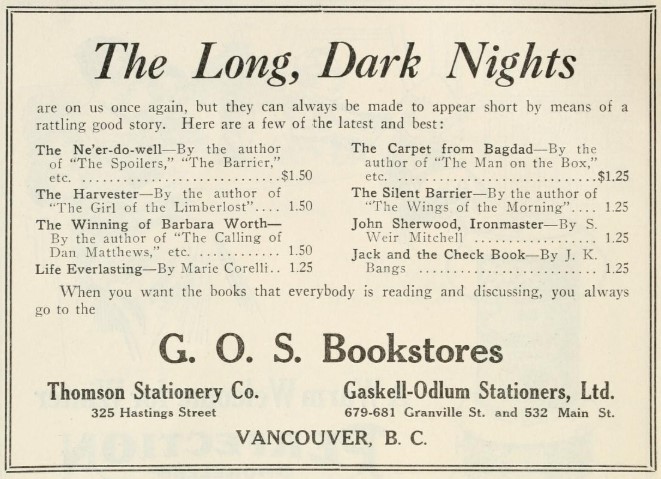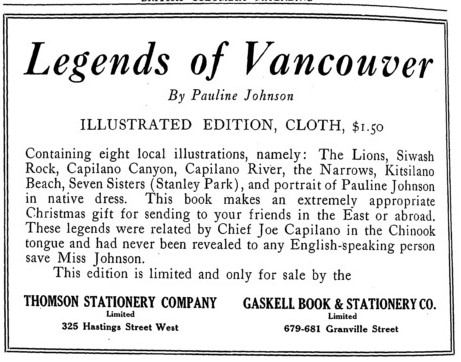In 1909, when Manfred Gaskell, Edward Odlum, and Albert Stabler bought Thomson Stationery Company, the firm was said to have the largest book stock in all of Canada (1).

By 1914, Gaskell had bought out both of his partners. He also had three stores operating as the Gaskell Stationery Company: two in Vancouver, at 679-681 Granville Street (established in 1910 after buying out Norman Caple & Company) and another at 532 Main Street (established 1911), and one in New Westminster at 649 Columbia Street (established in 1910 after purchasing the business of Thomas Todhunter) (2).
He was also a family man by this time, having wed Jessie Small Millar in Pembroke, Ontario, in 1911, with whom he had a son, Eric (3). In 1913, Gaskell had commissioned architect F.J. Peters to design a large and elegant family home in Shaughnessy Heights (4).
“His life is active in various phases of usefulness touching the general interests of society, while in business circles he has gained a reputation that is most enviable,” gushed the author of his biography in British Columbia from the Earliest Times to the Present. “He is honored and respected by all because of his achievements and the straightforward business policy he has followed. Employing the most progressive methods, he has also adopted as guide posts of his life those principles which everywhere excite admiration and respect and constitute the basis of all honorable and desirable prosperity” (5).

On April 3, 1912, a “spectacular conflagration” consumed the Hastings Street building where Thomson Stationery was located. First breaking out in the basement furnace room of Foster Fit-Reform next door shortly before 4 p.m., the fire quickly outgrew the fire crew’s efforts to stop it.
“The Thomson Stationery Co., who carried a stock valued at $140,000, were unable to estimate their loss last night,” the newspaper reported the next day. “Owing to the nature of the stock it will take weeks of stock-taking before they can get at even the approximate loss.” Most of the firm’s spare stock was in the basement under three feet of water (6).
The company seemed to weather any financial concerns caused by the fire, and evidently, their 325 Hastings Street location was rebuilt, as this address remained on company ads. In the ensuing few years, the regular appearance in local newspapers and industry publications of both of Gaskell’s enterprises gave the impression of great success.

In February 1914, Gaskell’s firm added a Thomson Stationery branch in Victoria, bringing that company’s payroll to 120 employees.
But during the war years, cracks appeared in the polished surface of Gaskell’s bookselling and stationery empire.
I’ll pick up from there next time.
Notes
(1) “Manfred James Gaskell,” in British Columbia from the Earliest Times to the Present: Biographical, volume IV (Vancouver, Portland, San Francisco, Chicago: The S.J. Clarke Publishing Company, 1914), 711-12.
(2) Ibid.; “Edward Faraday Odlum,” in British Columbia from the Earliest Times to the Present: Biographical, volume III (Vancouver, Portland, San Francisco, Chicago: The S.J. Clarke Publishing Company, 1914), 627-28.
(3) “Manfred James Gaskell.”
(4) Daily Building Record (June 4, 1913): 1.
(5) “Manfred James Gaskell.”
(6) “Spectacular Conflagration in Heart of Shopping District Watched by Curious Crowds,” Vancouver Sun (April 4, 1912): 3.
(7) “Introduction,” in E. Pauline Johnson, Tekahionwake: Collected Poems and Selected Prose (Toronto: University of Toronto Press, 2002), xxiii.
(8) “Thompson Stationery Co. Opens a Branch in City of Victoria,” Vancouver Sun (February 27, 1914): 4.
